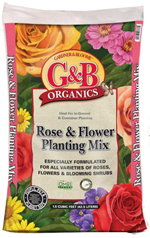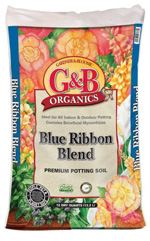|

|
 |
Featured Quote: Flowers are sunshine, food and medicine to the soul. |

|

|
|
|
|
|
Corn has an amazing history. "In Iroquois mythology, corn, beans and squash were represented as three inseparable sisters."* They were planted into one mound, seeds of maize first, later beans, and finally squash, because all three were eaten together. Corn (Zea mays) or maize is a member of the grass family and is thought to have been cultivated by the Aztecs as early as the 8th century. There are many types of corn grown in the United States for varying purposes. Dent and flint corn are both grown for stock feed, silage, ground meal, etc. Sweet corn, (Z.mays rugosa) is the type grown in for human consumption. Both yellow and white sweet corn are popular today. In Margaret Visser's book Much Depends on Dinner, she calls corn "Our Mother, Our Life." Much of our food supply has been touched by corn. Meat (corn-fed animals), canned and bottled food of all types, snacks, oils, margarines, syrups ... the list goes on and on. But long before groceries, in ancient history, corn was a staple food, a medicine and a means of exchange. "When the young leaves of the oak tree are the size of a squirrel’s ear, then you plant," were instructions to early European settlers from the Indians. If you grew up in the heartland, you know that spring is planting time for corn. This is true for sweet corn, too. For your home gardens, corn should be planted in blocks no less than three rows wide, not single rows. Why, you ask? Because of pollination: pollen forms on the tassels and each silk will form a kernel of corn, if pollinated. When the corn is grown in a tighter grouping, with breezes assisting pollination, all those tassels in proximity to each other have a greater success ratio. Corn needs lots of water and fertilizer while growing because it grows so fast and of course is so busy making ears of the sweetest corn you can imagine, just for you. Before planting, amend your soil with a high humus content amendment. Manure is another option. Mulch around your plants to keep weed growth down. Harvest when the ears are mature. When is that? When the silks are brown and dry, the tips of the ears are rounded but not hard and the kernels spurt milky liquid when pierced with your fingernail. In the meantime, , put in a few rows of sweet corn and enjoy. And if you are really feeling corny, sing a few bars of "Oh, What a Beautiful Morning" -- "The corn is as high as an elephant's eye..."! |

|
1. Continue to plant melons. |
 |
|
There is just not much good one can say about thrips. They attack ornamental landscape plants, spread viruses, and simply make the foliage ugly and your plant sicker than it was. Many pests "move in" and make themselves at home when the health of a plant is poor. Thrips are no exception. In fact, they are most likely to attack a plant that is too dried out--especially if the foliage is dirty. Thrips are microscopic and look like elongated black flies. They may be tiny, but the damage that they cause is not. And that damage is quite characteristic, and easily identified. The foliage becomes silvery or bronze and stippled, because thrips are both chewers and suckers. There can be a blackish deposit from their presence, and often the plant will develop sooty mold as well. The natural predators to thrips include parasitoid wasps, soldier beetles, and green lacewings and their larvae. Spraying with insecticidal soaps can also help. If their presence is minimal, cut, remove, and destroy the infested foliage. In severe cases, other insecticides can be used to treat an infected plant. Talk to one of our salespeople to determine not only the right product but also the right time in the season for treatment. Remember--during hot, dry weather, one of your best protections is to make sure your plants have the appropriate amount of water and fertilizers to keep them healthy. |
 |
|
How can I keep cats from using my vegetable garden for a litter box? Answer: If you don't have the time or the legs to play this game, a better solution is to sneak into your neighbor's yard at night and over-seed their garden with catnip. Their cat will be in pure heaven and never want to leave. Kidding aside, there are a number of naturally safe repellents that should make Fifi think twice about using your garden as her personal toilet. If an electric fence or chicken wire isn't your cup of tea, consider applying a commercial cat repellent. The key to using a repellent is to consistently re-apply the product until Fifi associates the desired area with the bad smell. Home remedies like moth balls (inside coffee cans with small holes in lids) or cayenne pepper shaken around the exterior of the bed have also been known to be somewhat effective. Mulching may help, and keeping the garden soil moist. Cats like loose, dry soil to bury their doings in. You may want to try to catch Fifi in the act and spray her with water. This will make you feel better but, unfortunately, rarely deters a persistent cat. |
 |
|
What You'll Need:
Step by Step:
|
 click here for a printer friendly version of this page
click here for a printer friendly version of this page |
Written content © 2004-2014 Garden Partners LLC, or respective authors. All Rights Reserved. Privacy Policy. All written content contained in this site is protected by United States copyright law and may not be reproduced, distributed, transmitted, displayed, published, or broadcast without prior written permission of Garden Partners, LLC. You may not alter or remove any trademark, copyright or other notice from copies of the content. Would you like a newsletter like this for your nursery or garden center? Please feel free to look at what we have to offer and contact us for your garden center marketing solutions. |











